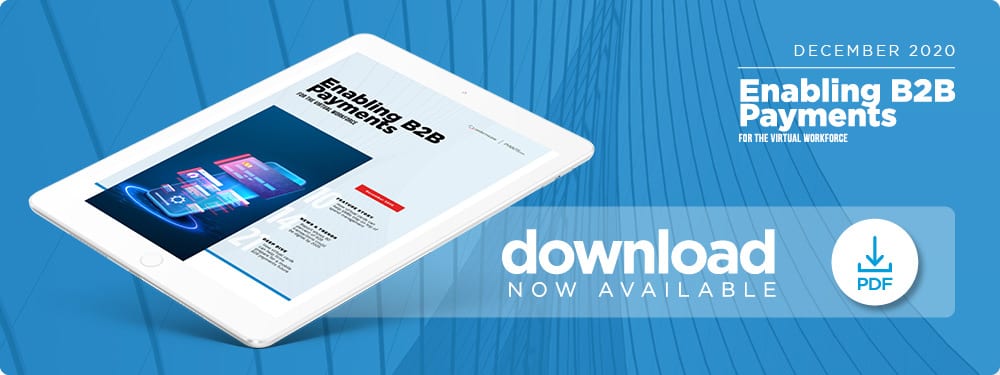How Virtual Cards Can Help Businesses Stay On Top Of Spend Management

Old-school ways of handling business expenses are falling by the wayside as employees continue to work remotely. In the B2B Payments For The Virtual Workforce Playbook, Caleb Jenkins of accounting firm RLJ Financial discusses the role of virtual cards in helping firms budget in real time.
The ongoing pandemic poses challenges that have amplified businesses’ need to digitize their payment operations. Some firms have better adjusted to new digital tendencies than others, especially when it comes to keeping track of B2B payments and spend management.
Many of the tools that have traditionally been used to track payments and manage spending have now fallen out of step with what businesses currently need in today’s digital environment. This has accelerated the need for spend management solutions and payment tools that enable businesses to review and approve transactions in real time, Caleb Jenkins, leader of client accounting services for tax and accounting firm RLJ Financial, said in a PYMNTS interview.
“The [pandemic] has brought attention to the need to review expenses … so having a system or tool that makes it very simple to … provide that oversight and accountability and transparency into what they are spending is crucial now,” Jenkins said. “[There is] a more real-time need to review expenses, and I am not sure that change is going away anytime soon.”
Being able to access payment tools that deliver speed and transparency has become crucial for businesses that want to stay competitive.
Bringing Virtual Cards To A Virtual B2B World
Businesses have long relied on traditional tools, such as credit cards, to manage business expenses. Credit cards may seem convenient, but using them often results in challenges when reconciling transactions and fixing errors.
Waiting extended periods to resolve expense-related problems is no longer an option for businesses facing cash flow constraints. Virtual cards can help resolve this problem, and RLJ Financial has firsthand experience with their benefits.
“Because we create a card with a specific purpose, we can also — in some respects — automate some of [the] back-end accounting aspects, and we can create rules on different cards to automate some … data entry into our general ledger accounting system,” he explained.
These benefits can significantly help streamline operations and can even prevent excessive spending. Payments automatically decline if a technology provider increases its prices significantly above the rate that has been set on a virtual card, for example, and the company would get notified upon the transaction’s decline. Virtual cards also facilitate easier tracking and categorization for expense management. Employees can request access to funds before they are released to make transactions, Jenkins added, allowing the firm to better mitigate fraud.
“If we create a virtual card that has its own unique card number, unique security code and expiration date … for each vendor, we can also set up a limit for each virtual card for a monthly spend … it [is] a card that is used for [one] specific purpose, so, from a security standpoint, it is beautiful,” he said.
Virtual cards can also help businesses save time as they would no longer need to manually update outstanding payments’ or expenses’ statuses. Such details can also be tracked faster.
Budgeting With Real-Time Data
The benefits of using virtual cards extend far beyond spend management. Access to virtual cards’ real-time spending data can also improve how businesses manage their quarterly budgets. More businesses will leverage this key benefit in the future, Jenkins explained.
“Instead of budgeting being a one-time aspect, [in the] December time frame for the upcoming year, [there will be] more of a shift to a real-time budget, where we create a budget for a specific category or a specific project … [and] then monitor spending according to what we set for a more limited approach, instead of just this big behemoth of a year,” he said.
The benefits of being able to access that data in real time means that more traditional expense management tools may prove too slow or too complex for companies in just a few short years. Adopting virtual cards ahead of the curve could help companies move into the new emerging digital B2B world at speed.

